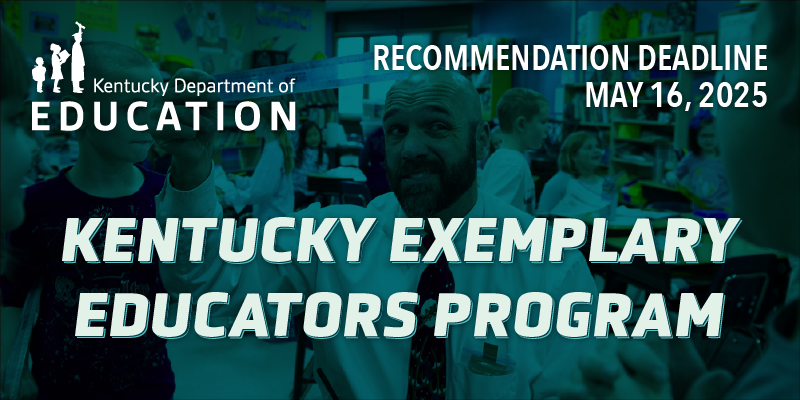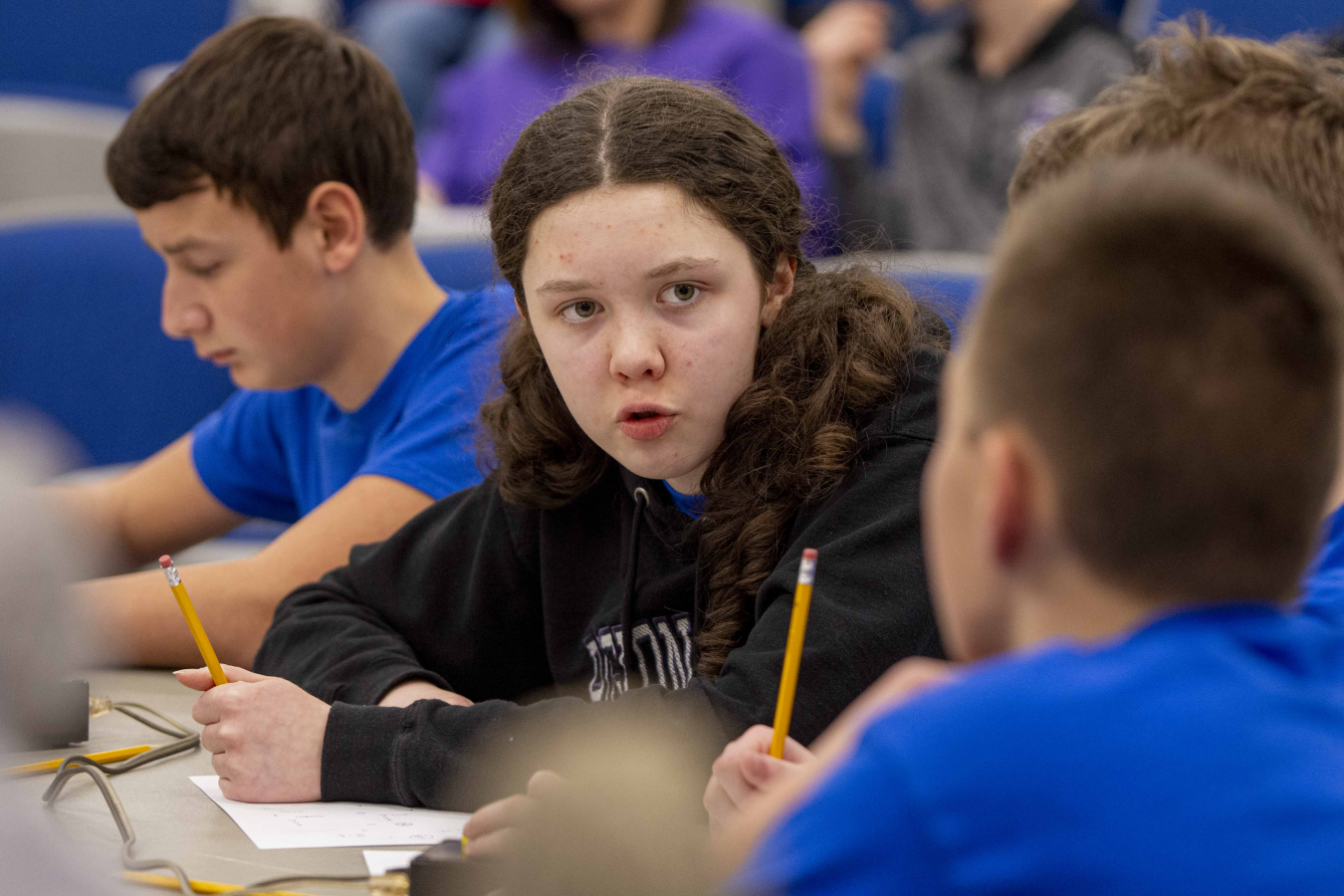
While the Kentucky Department of Education is focused on helping districts provide the best possible education during the remainder of the 2019-2020 school year, the fall re-entry conversation has now begun within the department’s array of advisory groups.Photo by Amy Wallot, July 9, 2014
- KDE’s Office of Teaching and Learning presented the second installment of its webcast series providing guidance for re-entry to support student academic transition and success.
- Section A is broken up into three different steps, and since the bulk of the work is found in this section, it’s important that content teams have enough time scheduled to focus on this process.
By Jacob Perkins
Jacob.perkins@education.ky.gov
The COVID-19 crisis has had a severe impact on every walk of life – especially education.
All 172 Kentucky school districts, 53 area technology centers and the Kentucky School for the Blind and Kentucky School for the Deaf ceased in-person classes and began instituting non-traditional instruction in response to a March 16 recommendation by Gov. Andy Beshear that has been extended through the rest of the school year.
While the Kentucky Department of Education (KDE) is focused on helping districts provide the best possible education during the remainder of the 2019-2020 school year, the fall re-entry conversation has now begun within the department’s array of advisory groups.
KDE’s Office of Teaching and Learning (OTL) is focusing on the academic portion of the re-entry conversation so that teachers, schools and districts can begin to prepare for what school may look like in a few months.
On May 6, OTL presented the second installment of its webcast series designed to provide guidance for schools and educators on how to support students when in-person classes resume. The OTL team dove into Section A of Stage One of the academic re-entry process, which emphasizes creating an adjusted curriculum for the 2020-2021 school year. The purpose of this section is for the grade-level or course content team to analyze the 2019-2020 curriculum and make adjustments to the 2020-2021 curriculum to address knowledge gaps for incoming students due to extended remote learning resulting from the COVID-19 emergency.
When preparing for Section A, it’s important to think about what resources will be needed to complete the work. Teachers will need individual copies of the guidance document found on KDE’s COVID-19 webpage. Also needed will be the 2019-2020 local grade-level curriculum for content areas, a lesson plan book or calendar that was used in the 2019-2020 school year and an electronic version of the Kentucky Academic Standards (KAS) for the specific content area that the teachers will be working on.
“Stage One is made up of three different sections. Section A probably is the most time-intensive of all of the sessions that we have,” said OTL Professional Learning Coordinator Misty Higgins. “But really the work that you’re going to do here will help Sections B and C go much smoother and easier.”
Section A is broken up into three different steps and since the bulk of the work is found in this section, it’s important that content teams have enough time scheduled to focus on this process. If teams are planning on doing this work face-to-face, it is advised to first check with a local health department for guidelines on social distancing.
Section A: Step One
In Step One, based on the 2019-2020 curriculum, teachers will list all the content, concepts and/or skills taught prior to extended remote learning, only taught during extended remote learning and what is in the 2019-2020 curriculum but was not taught during the 2019-2020 school year. Teachers need to be as specific as possible in this step and avoid listing broad concepts and/or only standard coding.
“The more explicit you are in Step One, the easier it will make the analysis that you will do in Step Two,” said Higgins.
Section A: Step Two
Once Step One has been completed, teachers will come together with their grade-level or course content team and use the KAS to identify the content, concepts and/or skills that are listed in Step One for alignment to the grade-level standards.
“We realize there is a lot of work within this step. So our goal was to provide directions that were as simple and specific as possible to make the process easy to do,” said Higgins.
OTL recommends that for each standard in each grade level, teams come together to do the following:
- Read the standard;
- Locate the progression or coherence statements of the standard focusing on one grade level below and one grade level above;
- Examine and discuss the progression or the coherence statements to determine the appropriate depth of the content, concepts and/or skills required to meet the expectation of the grade-level standard;
- Analyze the content, concepts and/or skills that were listed in Table 1.1, and highlight those that tightly align with the expectations of that standard for your grade level; and
- Record the standard coding next to the highlighted content, concepts and/or skills in Table 1.1.
“What we realize could happen as teachers are working through Step Two, is they may look at a standard and get into the discussion of the content, concepts or skills that are required, and then, they may look back at their table in the first step and maybe that content, concept or skill is not present,” explained Higgins.
“To address this issue, we included a table in Step Two (Table 1.2) where they may record any grade-level content, concept or skill that is in the KAS document necessary to meet the grade-level expectation but is not in their Table 1.1.”
Content recorded in this table will be necessary to include in the adjusted 2020-2021 curriculum.
In Step Two, school leadership may consider including district or school level instructional specialists, cooperative content specialists or regional professional organizations.
Higgins said that Kentucky’s education cooperatives are already planning on how they will be able to assist schools and districts as they implement this work.
Section A: Step Three
The final step in Section A will be consolidating the grade-level content, concepts and/or skills from steps one and two to be used in the development of the 2020-2021 adjusted curriculum.
While still working in a grade-level or course content team, teachers will list the highlighted content, concepts and/or skills from Table 1.1, list the content, concepts and/or skills from Table 1.2 and check to ensure all grade-level standards from the KAS are included in a final table; Table 1.3.
Team consensus should be reached on any content, concepts and/or skills placed in Table 1.3, and OTL recommends creating one master copy of this table for the content team.
“Once you complete this table, go back through and double check to see if all of the standards of the grade level in this content are included in table three,” said Higgins.
OTL’s next webcast will be 2 p.m. ET May 13 and will cover Sections B and C. In these sections, teachers will identify where they anticipate academic gaps being for their students.
For more information about COVID-19:
- Kentucky Department for Public Health’s COVID-10 webpage
- KDE’s 2019 COVID-19 webpage
- COVID-19 Hotline (800) 722-5725




Leave A Comment